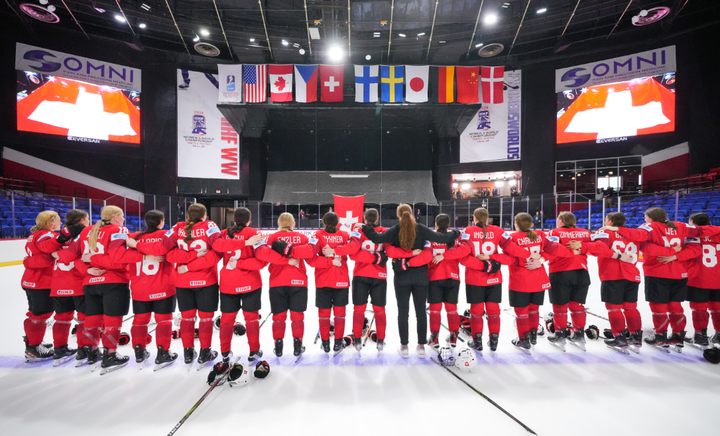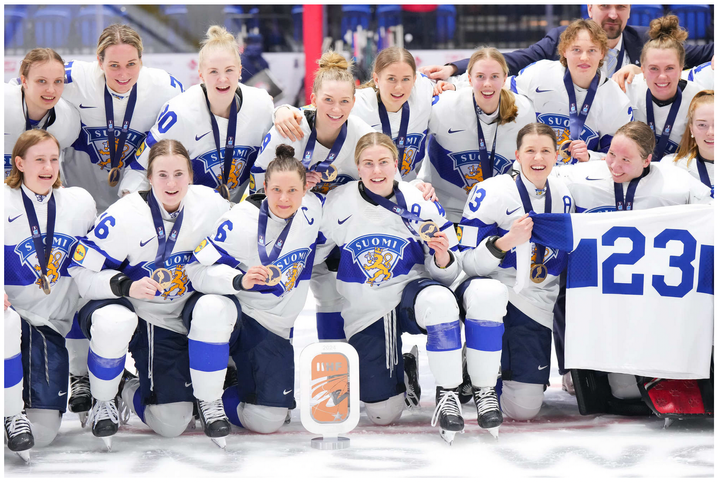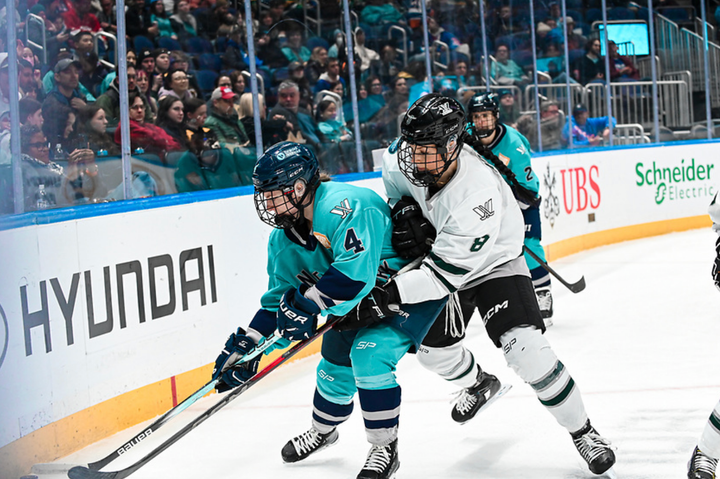What each NWHL team needs to work on
What should NWHL teams have been studying during the Four Nations break?
The 2018 Four Nations Cup is over, which means that the 2018-19 NWHL season is about to get back underway. Today, we’re going to look at something that each NWHL team can improve on.
Minnesota Whitecaps
Yes, the Whitecaps are undefeated, but that doesn’t mean they’ve been playing perfect hockey. The Whitecaps are where they are right now thanks in large part to stellar goaltending, a lethal transition offense, and more depth scoring than you can shake a stick at.
However, the Whitecaps’ 44.0 SF% (shots for percentage) at 5v5 is ranked fourth in the league. They are blowing the opposition out of the water in 5v5 scoring, but how long can they keep that up while being outshot at such a rate? It should also come as no surprise that the Whitecaps have the highest team shooting percentage in the NWHL and an unsustainably high PDO of 114. Minnesota will only improve — which is a scary thought — if they find a way to generate more shots at 5v5 outside of rushes.
Related
Women’s Hockey Analytics Primer
One has to wonder what Minnesota will look like when Amanda Leveille and the Whitecaps’ shooting percentage come back down to earth. Perhaps they’re happy to be a team that thrives on the counter-attack, but the rest of the NWHL will soon adapt to Minnesota’s speed and do a better job of denying them rushes and second and third chances right on top of the goal crease.
Buffalo Beauts
Something tells me that the Beauts have been spending a lot of time working on the power play.
The Beauts have gone 0 for 12 on the power play thus far this season, which makes them the only NWHL team without a special teams goal. That goose egg is a big deal for a team that is outscoring the opposition 13–5 during 5v5 hockey and has the second-best 5v5 SF% (63.0) in the league. Would they have found a win in Minnesota before the Four Nations Cup break if the power play delivered? It’s hard to say, but it certainly would have changed the complexion of that series.
Buffalo has too many weapons to continue struggle on the power play like this. All of the talent is there, so the goals are going to come. Part of the problem might be that Buffalo is having some trouble getting their shots through traffic. Buffalo has had more shots blocked* than any other team in the league.
The good news for the Beauts is that they have all the tools they need to combat that problem. Buffalo might want to try generating more shots from the point on the power play and asking their big, skilled forwards to crash the net and cash in on rebounds and deflections. You have Blake Bolden’s cannon back there; you might as well use it.
Boston Pride
The Pride’s 67.0 SF% at 5v5 is the best in the NWHL, but they have also played against the NWHL’s two worst teams in regards to shot share. So, it’s hard to say just how good the Pride are right now because of who they’ve played. That also makes it tricky to identify what areas they need to work on.
With that being said, head coach Paul Mara’s team has looked very good against teams that we expected the Pride to look good against. They lost to the Riveters at home on Oct. 27, but outshot the visiting team 37-29 despite not having a single power play opportunity (the Riveters had four). Sometimes the hockey gods are cruel. Sometimes the vising team scores a game-winning goal from behind the goal line with three seconds left.
Something that the Pride might want to look at is generating some more offense from the blue line. Gigi Marvin has played both forward and defense, but it appears that she’s playing up in the lineup more than she’s patrolling the blue line. But even with Marvin at forward, the Pride still have Alyssa Gagliardi, Kaleigh Fratkin, and Lexi Bender ready to contribute some offense from the blue line.
It’s also worth mentioning that five of the six goals that the Pride have allowed have been scored right on top of their goal crease. Boston needs to do more to prevent opposing forwards from finding greasy goals around the net. Katie Burt, who has a .908 save percentage in her first three starts, can’t be asked to stop the opposing team’s second and third chances after she stops the first.
Metropolitan Riveters
The easy answer for what the Riveters need to improve on would be better defense and goaltending, but there’s more to the Riveters’ –13 5v5 goal differential through six games than that.
Anyone who has watched the Riveters this season can attest to how much the defending Isobel Cup Champions have struggled to move the puck. The crisp passing that defined the Riveters’ transition game and power play last season has disappeared. In its place is a one-dimensional power play that looks dependent on Amanda Kessel to pull the strings and a dismaying number of failed zone exits at even strength. You can’t win hockey games if you can’t get the puck out of your own zone.
The good news for the Riveters is that Miye D’Oench and Courtney Burke will both be back with the team soon. The Rivs also entered the Four Nations Cup break on a high note with their unlikely win against the Pride, so they should be a healthier, more confident team this month. Maybe that means we’ll see the Riveters’ 7.0 team shooting percentage improve and Katie Fitzgerald get back into her groove. We’ll soon find out.
Connecticut Whale
The Whale need to do more to help goaltender Meeri Räisänen — and that isn’t just limited to better play in their own zone. The Whale have a 15.67 SF60 (shots for per 60 minutes), which just isn’t good enough. Head coach Ryan Equale needs to figure out what he can do to get his team closer to the 25.97 SF60 rate that the Whale had last year. Hopefully puck-moving defender Taylor Marchin, who signed with the team on Nov. 2, will be able to help that cause.
Something else the Whale can do to improve their possession numbers is get the puck in the hands of Katerina Mrázová, Emily Fluke, and Nina Rodgers. Those three forwards appear to be the main drivers of Equale’s offense. The only other Whale skater who has five or more shots thus far this season is Jamie Goldsmith.
Have heard that Mariya Sorokina (@Marushka69) is in the States and will be at the next @CTWhale_NWHL practice. Sorokina, 23, is an exceptional goaltender who most recently played in the @whl_ru and has played for the Russian national team. #NWHL pic.twitter.com/Mpjk0GD0aH
— Mike Murphy (@DigDeepBSB) November 9, 2018
The arrival of Mariya Sorokina, who practiced with the Whale for the first time just a few days ago, should also take some of the pressure off of Räisänen. Sorokina has experience playing against North American players and NWHL competition. If the first chapter of the 2018–19 season revealed anything, it’s that the Whale are going to need exceptional goaltending more than any other team in the league.
* The NWHL’s shot block data is frequently inaccurate/incomplete.
Data courtesy Even-Strength.com, NWHL.zone, and my own data.





Comments ()